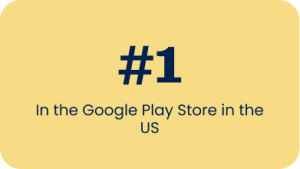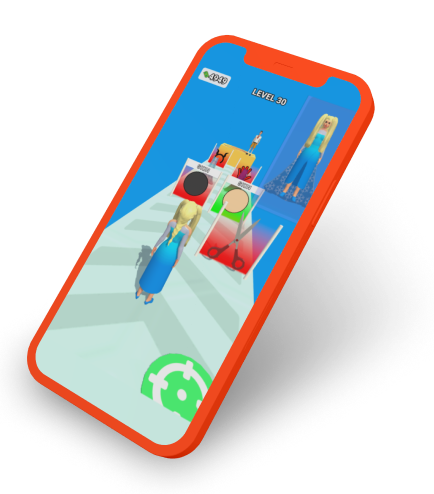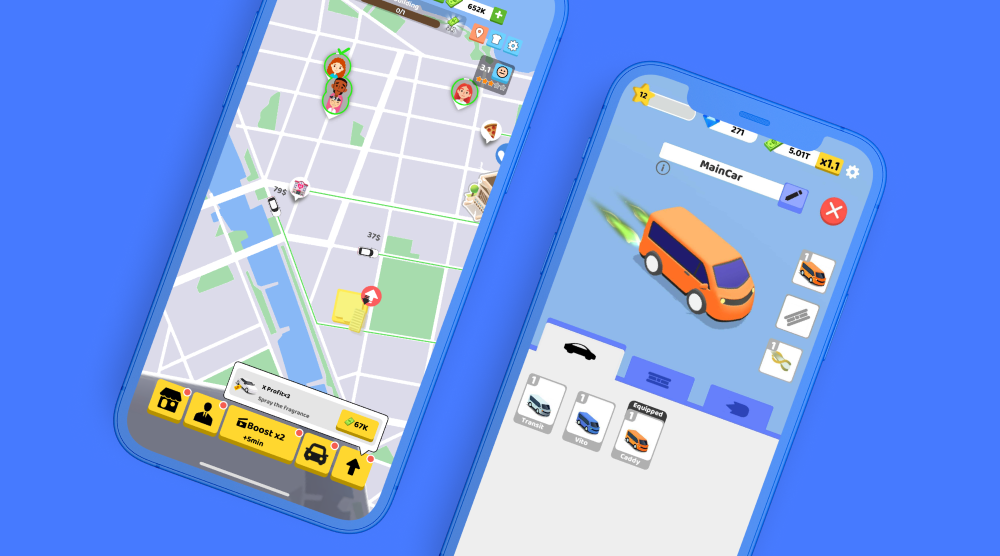Polystation is a small indie game studio based in Trinidad with just two developers, founders, and brothers John and James. But that hasn’t stopped them from creating one of the top games of 2023, Build A Queen. Together with the team at Supersonic, the brothers transformed the hyper-casual runner from a promising prototype into chart-topping success.
Here, John shares his experience of creating a hit hyper-casual game, reaching the number 1 spot in the US and top 10 worldwide on the Google Play Store, in a tough market with Supersonic.


A queen in the making
From the start of developing Build A Queen, we knew that Supersonic was the publisher we wanted to work with. They were at the top of their game, publishing one huge hit after another. Plus, we were familiar with them from our ideation research - the Supersonic YouTube page is one of our most visited when we search for hyper-casual ideas and runner best practices.
So when we saw that Supersonic was holding one of their contests, we jumped at the chance to submit our game.
Using big visual changes in our creatives to raise marketability
When we first submitted the prototype for Build A Queen, it had a different name and concept, although with the same core runner mechanics. The game we originally submitted revolved around transforming the player’s character to meet certain specifications. Players did this by running through upgrade gates that changed the appearance of their character.
The initial marketability tests showed that the game had potential. We were able to get a CPI that was stable at 30-40c, 900s playtime, and an unstable retention rate of 27%. Good, not great scores.
But we had a secret weapon. As the team at Supersonic informed us, one thing that all current super successful runner games share in common is big visual changes in the creatives. So, because our game’s concept revolved around changing the appearance of the player character, it had huge potential for creative optimization.
This wasn’t by accident. We had purposely looked at the top charts to find what the top games shared and identified two common themes: gate runners and big visual changes. Our philosophy was to find these commonalities and innovate on top of them by adding complementary mechanics.
And that’s what made our game a perfect candidate to be the next big runner hit.
Segmenting and optimizing for a target audience with female-focused creatives
We changed the creatives we were using - putting more of a focus on the visual changes. Our publishing manager at Supersonic also believed that our user acquisition campaigns would perform better if they were more specific and female-oriented. By targeting a female audience with our creatives and game art, we could effectively segment our audience and optimize our marketability for that audience.
We introduced creatives where users could transform the character in a make-over or turn their character into feminine archetypes, like princesses, nurses, mermaids, and vampires. This added a female-focused direction to our campaigns and integrated a fashion roleplay element to the creatives. Implementing these changes, we saw improvements in our marketability KPIs - our playtime increased to 1400s and our retention rate stabilized.
Tuning our concept and art to match our creatives
After seeing how well our creatives performed, the team at Supersonic advised that we pivot away from the original game concept and, instead, use the female-oriented creative campaign as inspiration for a new one. We settled on beauty competitions. Users now needed to transform their character to win a contest by running through visual modification gates. This led to the biggest change so far - renaming the game to Build A Queen (like beauty queen).
To align with this new concept and direction, we feminized our art to appeal more to female audiences and added a competitive layer to the levels - including a second runway where a bot competes with players to meet level goals.
Keeping it interesting with new meta layers and even more content
The team at Supersonic told us that one of the biggest pitfalls of runner games is repetitive gameplay. So, if we wanted to increase our retention rate, we needed to make sure that users were not getting bored. To do this, we added meta layers to the game. Players now could access a base that they could decorate as well as pets that could be unlocked through RVs and IAPs. These pets would live in their bases and were a way that players could personalize the game. We also added bonus levels where players could ride their pets.
These new meta layers had a positive impact on our retention rate, increasing to 30%, as well as playtime, increasing to 1500s, while our CPI stayed stable at 40c. This was proof we were on the right track, but our goal was to reach 2000s playtime and hit a retention rate of 35%. So we added even more meta content.
In our next iteration, we created a make-up mini-game, increased level length, and added a new challenging mechanic where levels rotate (literally). Now, the meta makes up about 20% of the game - so there’s plenty of diverse content to keep players interested and engaged.
These improvements paid off, and we were able to hit our launch goals, reaching a retention rate of 34%, a playtime of 1900s, and a stable CPI of 35-40c. We could now integrate ads and RVs into the game. But, introducing RVs came with a new challenge to overcome - our RV engagement was too low, with an average rate of 1.5-2 RVs watched per user.
Optimizing our RV engagement
Motivating users to engage with RVs is all about giving them a good reason to - at least that’s what the team at Supersonic told us. So, we started by offering users new cosmetic rewards for engaging, like new pets, base colors, decorations, and outfits that could only be unlocked through RVs. Next, we added side missions that could only be completed by watching RVs.
One of our favorites is on a level where the player has to transform their character into an angel, and the side quest is to save a young woman which triggers a bonus level. But, if players want to help the woman, they need to watch an RV first.
These changes had a huge effect on our RV engagement rate, raising it to 5-7 per user.
Launching a global hit and getting the top spot in the US
We had been hard at work on the game to get it right. We’d started from one place and had arrived at a completely different one, changing and updating everything from our creatives to our art style and core gameplay loop. But all that work was worth it - the team at Supersonic had expertly guided us through creating a hit game.
We launched Build A Queen and in the first month we reached the top 4 on the Google Play Store in the US. We soon went on to take the number 1 spot and reach the top 10 worldwide.
Let's put these tips to good use
Publish your game with Supersonic


